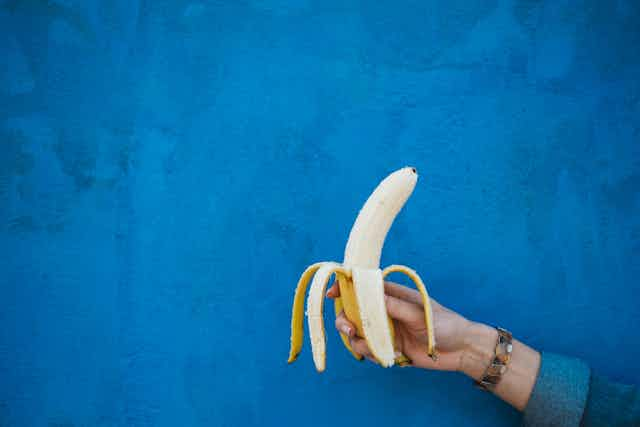This is the third in a four-part series on sugar, which covers sugar-free diets, how the different types of sugars compare, and the links between sugar and disease. Catch up on the other instalments here.
We hear regularly from health organisations and experts that we should eat less sugar. But we’re also told we should eat more fruit.
All types of sugar will give us the same amount of calories, whether they are from fruit or soft drink. But the health risks of eating sugar are related to consuming too many “free sugars” in the diet, not from eating sugars that are naturally present in fruits or milk.
Types of sugar in food
Sugar in food and drinks comes in various forms. Sugar molecules are classified as monosaccharides (single sugar molecules such as glucose and fructose) and disaccharides (more complex structures such as sucrose and lactose).
Fruit contains natural sugars, which are a mix of sucrose, fructose and glucose. Many people have heard that sugar is bad, and think that this must also therefore apply to fruits.
Read more: You don't need to quit sugar to improve your health
But fructose is only harmful in excess amounts, and not when it comes from fruit. It would be incredibly difficult to consume excessive amounts of fructose by eating whole fruits.
It’s much easier to consume excess sugar from foods and drinks that contain “free sugars”.
Free sugars include these same sugars (fructose, glucose, sucrose), but in this case they have been removed from their naturally occurring source (rather than being eaten as natural parts of fruits, dairy products, and some vegetables and grains). This includes sugar that is added to food and drinks by food companies, cooks or consumers.

Health risks come from free sugars, not fruits
Evidence shows that the health risks from sugars, such as tooth decay and unhealthy weight gain, are related to consuming too many free sugars in the diet, not from eating sugars that are naturally present in fruits or milk.
For this reason it is recommended that no more than 10% of your daily calories come from free sugars. For the average adult, this is about 50g or only slightly more than the amount of sugar in a can of regular soft drink or soda. It’s estimated that Australians get around 60% (65g) of their sugar intake from free sugars.
Foods that are sources of free sugars, such as juices, soft drinks, biscuits and lollies, are often high in calories and have little other nutritional value. It is often easy to consume more of them compared with fresh fruit and they also may be replacing other nutritious foods in the diet.
Consider a bottle of fruit juice – you would have to eat six whole oranges to get the same amount of sugar you consume in the juice. And because the fruit is in juice form, it counts towards your daily limit of free sugars.
Calories from drinks that contain sugar often become an addition to the calories you are eating from food, which may lead to weight gain over time.
Eating large amounts of dried fruit is also not a good idea if you are limiting your sugar intake. Through the process of removing water from the fruit, nutrients are concentrated, such that dried apricots, for example, contain about six times as much sugar (40g per 100g) as fresh apricots (6g per 100g).
We need to eat fruit
Unlike many foods that are high in free sugars, fruits are packaged with lots of nutrients that help provide us with a balanced diet for good health.
For starters, fruit is an excellent source of fibre. An average banana will provide 20-25% (6g) of your recommended daily fibre intake. Getting enough fibre in the diet is important for protecting against bowel cancer. There is clear room for improvement in our fibre intake – adults in many countries consume only about half of the recommended amount each day (25g for Aussie women and 30g for Aussie men).
The fibre in fruit, which is often absent in many foods and drinks with free sugars, may also help to fill you up, which means you eat less overall at a meal. It’s not clear exactly why this is, but it could be related to the volume of the food (especially compared with liquids) and the chewing involved.
Fruit is also a good source of other nutrients such as potassium, which can help lower blood pressure, and flavonoids, which may reduce your risk of heart disease.
There is evidence that eating whole fruits (alone and in combination with vegetables) reduces your chances of dying from cancer, obesity and heart disease.
Despite this, only about 50% of Australians eat at least two pieces of fruit per day.
Most national dietary guidelines encourage eating fruits and vegetables, with an emphasis on the vegetables. To try and eat your recommended two pieces of fruit per day remember that a piece could be a banana, apple or orange, or two smaller fruits like plums or apricots, or a cup of grapes or berries.
Read more: Food as medicine: why do we need to eat so many vegetables and what does a serve actually look like?
When it comes to other sources of sugars, try to choose foods that have little or no sugar listed in the ingredient list, and drink water instead of sugary beverages when you are thirsty.


